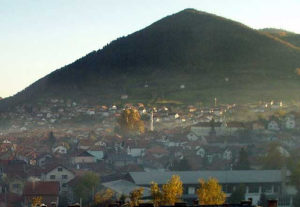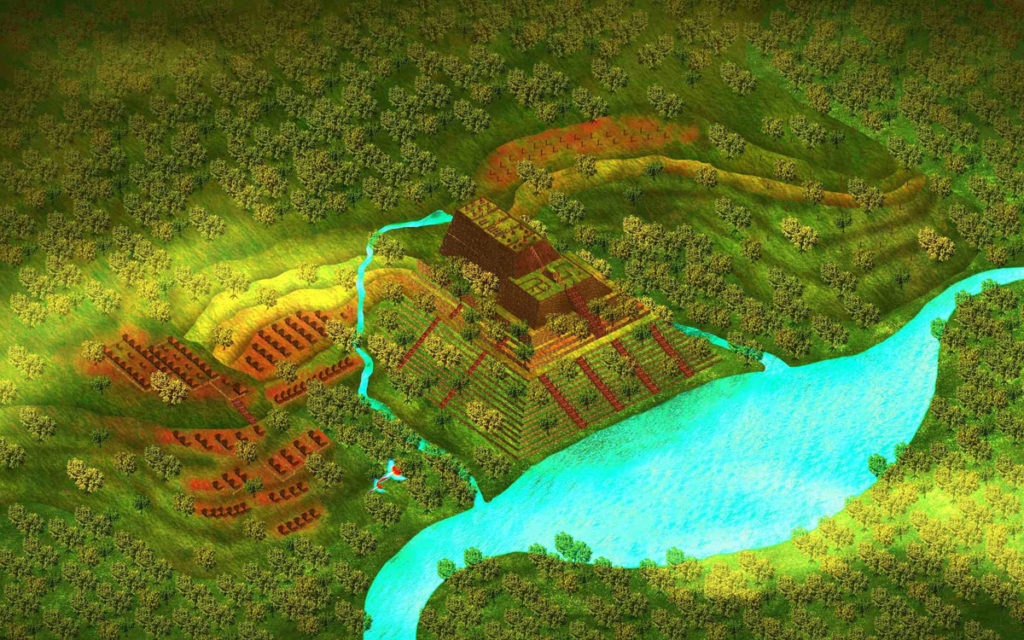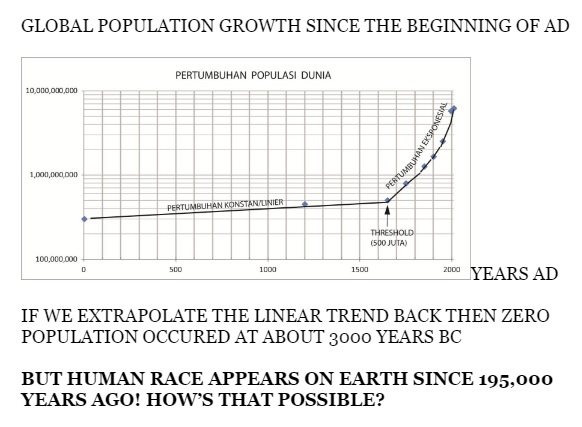 Here is a no-brainer: before machines were invented, a great way to build a very large monument was to pile up a very large number of stones or other materials into a structure that was big at the bottom and small at the top. The result would be structurally stable, highly visible in the landscape, close to heaven, and with a great view from the top. It’s such a good concept, indeed, that large-bottomed small-topped monuments showed up independently all over the ancient world, though customized by different cultures—optional internal chambers, external staircases, stepped or smooth or rounded sides, pointy tops, crowning structures, etc.
Here is a no-brainer: before machines were invented, a great way to build a very large monument was to pile up a very large number of stones or other materials into a structure that was big at the bottom and small at the top. The result would be structurally stable, highly visible in the landscape, close to heaven, and with a great view from the top. It’s such a good concept, indeed, that large-bottomed small-topped monuments showed up independently all over the ancient world, though customized by different cultures—optional internal chambers, external staircases, stepped or smooth or rounded sides, pointy tops, crowning structures, etc.
The trouble is, even as wildly various as they are, they all get called pyramids nowadays, even those that are technically nothing of the sort. And then, zealots with a pseudoarchaeological agenda point to the wide distribution of pyramids in the ancient world as evidence of ancient aliens, lost technology, or some variant of the Atlantis farrago. This is bad enough when they do it with real monuments, but especially irritating when they drag in so-called monuments that were not actually made by human (or alien) hands. Nature, it seems, also has a penchant for large-bottomed small-topped landforms, and can throw up some very passable pyramids indeed.
The town of Visoko, Bosnia, stands in the lee of a hill—a high, pointy hill that looks like a pyramid from some angles but not others, and certainly not from above. The geologists explain it as a flatiron formation, an artefact of erosion, not culture. Nowadays, parts of it looks like a step pyramid because a certain notorious pseudoarchaeologist carved steps into its flank, mistook natural tessellated 
pavements for manmade pavements, and either perpetrated or fell for a hoax involving fake inscriptions in a tunnel that has bugger-all to do with the “pyramid.”
And yet, the Bosnian government has wholeheartedly thrown its support behind the project, because it brings in tourist dollars and aggrandizes Bosnia’s past. Meantime, Bosnian museums and archaeologists struggle for funds to carry on with their valuable but less glamorous labours.
A similar situation holds in Indonesia at the site of Gunung Padang, the Mountain of Light, an undoubtedly ancient site being touted as even more ancient for reasons of tourism and national pride. Gunung Padang is a large pointy hill of volcanic origin, pretty common in those parts; but the flanks have been extensively terraced
using horizontally laid columnar andesite, which was also used to construct now-ruinous buildings on a series of small plazas at the summit.
To the archaeologists, vulcanologists, and the majority of other Indonesian scholars, Gunung Padang is a natural volcanic plug on which humans have built stuff over the last 2500 years; but to the research team currently working there, it is an manmade hill of enormous antiquity, perhaps the world’s first and greatest pyramid, relic of a lost civilization with a remarkable resemblance to—yes—Atlantis. The Indonesian president, naturally, prefers their version. So do the same lost-civilization pseudohistorians who have embraced the Visoko lunacy.
 Trouble is, it is damned hard to get a good look at the evidence which the chief investigator claims to have uncovered. Danny Hilman Natawidjaja, a CalTech-PhD seismologist, originally took a team to the area to study past seismic disasters with a view to mitigating future damage. But then, this hill that was just too gorgeously pyramidal to be natural caught his attention, and his claims about it caught the president’s attention, and then went viral. The reason it is so hard to assess Natawidjaja’s claims, however, is that they are available only in popular articles, some of them through hilariously bad google translations.
Trouble is, it is damned hard to get a good look at the evidence which the chief investigator claims to have uncovered. Danny Hilman Natawidjaja, a CalTech-PhD seismologist, originally took a team to the area to study past seismic disasters with a view to mitigating future damage. But then, this hill that was just too gorgeously pyramidal to be natural caught his attention, and his claims about it caught the president’s attention, and then went viral. The reason it is so hard to assess Natawidjaja’s claims, however, is that they are available only in popular articles, some of them through hilariously bad google translations.
Nevertheless, a few claims are clear. First, Natawidjaja claims to have proved the hill is artificial, an enormous megalithic monument originating around 20,000 BC and built up in three or four stages. Second, he claims to have detected underground chambers, either manmade or modified by human activity, deep in the monument’s heart. Third, he claims to have recovered artifacts evidencing sophisticated metallurgical and electrical technology dating prior to 11,000 BC. Fourth, he declares that the investigations have been impeccably scientific, utilizing ground-penetrating radar, electrical resistivity tomography, seismic tomography, and core samples—because, unlike that bloke in Bosnia, Danny Hilman Natawidjaja is a real live scientist.
But lurking on his Google Scholar listing of perfectly legitimate and respectable geological papers is a nugget published in 2013: PLATO NEVER LIED: ATLANTIS IS IN INDONESIA. This was followed in 2014 by a kindle pamphlet with the entertaining title GUNUNG PADANG MEGALITHIC SITE: Are They Primitive? which seems to be a presentation made at the World Culture Forum in Bali, 2013. Amazon’s free sample was enough to put me off wasting ten bucks on a 34-page kindle opus, since it kicked off with a piece of silliness worthy of a Young-Earth Creationist:
Clearly, something interesting is going on. The question is, what? How scientifically plausible is the research program at Gunung Padang? Does GPR+ERT+ST=GIGO, or has a remnant of a true Atlantis been uncovered at last? In Part 2, I’ll take a closer look at the Mountain of Light.




